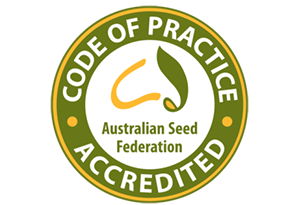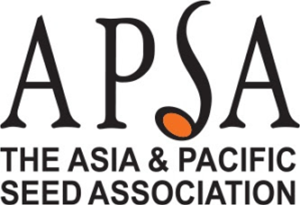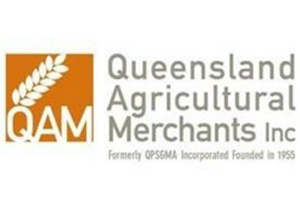Tall Fescue
A deep-rooted perennial grass native to Europe, the Mediterranean region, and Asia. It is suited to soils of medium to high fertility, will tolerate waterlogging and moderately saline conditions.
There are two distinctively different types, summer active and summer dormant. Summer active tall fescues have the ability to out-produce perennial ryegrass during summer and require periodic summer rainfall or irrigation.
Summer dormant types have the ability to persist in areas of very low rainfall.
Rainfall: ……. 350-600mm+ or Irrigation
Seed count: ……………………. 410,000/kg
Sowing rate: ………….. 20-30kg/Ha (sole)
…………… 8-20kg/Ha (in a mixed pasture)
Finesse-Q
Finesse-Q is a high yielding, densely tillered, soft-leaf fescue with semi-late heading. It is extremely persistent due to its dense nature and has no fescue endophyte. Its’ tiller density and high leaf quality make it well suited to dairy, beef and sheep. Its’ lack of endophyte makes it also suited to grazing by horses, goats and alpacas.
Rainfall: 600mm+
Endophyte: Nil
Prosper
High winter production and summer dormancy. Ideal for low summer rainfall areas and shows good persistence.
Rainfall: 350mm+
Endophyte: Nil
Cocksfoot
A deep-rooted perennial grass of high to moderate drought tolerance (depending on cultivar), native to Northern Europe and the Mediterranean regions. Persistence and quality can be improved by attention to grazing management.
The tendency to form dense clumps is also mitigated by grazing management, though this is inevitable in the long term.
There are two distinct types; European types that are summer active and Mediterranean types that are summer dormant.
Cocksfoot needs reasonably well-drained soils to persist, and will tolerate soils of very low pH.
Cocksfoot has been proven to out-produce ryegrass and tall fescue in DM/kg but is widely considered to have a lower palatability and requires greater management.
Rainfall: …………………………… 350-750mm
Seed count: ……………………. 1,500,000/kg
Sowing rate: ………………… 1-3kg/Ha Mixes
…………………………..5-8kg/Ha as Sole Grass
Lazuly
A late flowering variety with semi-erect growth habit, high palatability and persistence. Lazuly is suitable for sheep, beef and dairy systems, being softer and more palatable to animals.
Rainfall: ……………………………….600 mm+
Summadorm
Summadorm is a hardy deep rooted Mediterranean type cocksfoot, demonstrating excellent summer
dormancy compared to other Mediterranean types, and is proven to show increased persistence in medium rainfall zones. It also continues to produce strong winter yields, assisting in filling the winter and early spring feed gap.
Rainfall: ………………………. 400-550 mm+
Yarck
A Mediterranean x European type with vigorous seedling establishment, high winter growth and softer, more palatable leaves. Yarck has the ability to respond and grow with summer rainfall.
Rainfall: ………………………………. 400mm+
Prairie
Bromes are deep-rooted grasses; they are very heat and drought tolerant and produce high quality nil endophyte pastures. They prefer free-draining
soils and are intolerant of pugging and being waterlogged.
The bromes have been split into three distinct types:
1. Prairie Grass (high production over a short period and high reseeding potential)
2. Pasture Brome (medium term pasture)
3. Grazing Brome (more persistent long term pasture)
Seed count: ………………………… 90,000/kg
Sowing rate: ………………………. 30-40kg/ha
Jeronimo
Jeronimo is a new highly winter active prairie grass with a broad fit for pasture systems where rotational grazing is used. It has similar maturity to Matua and has excellent capacity for reseeding into pasture swards. It has much improved autumn/ winter activity to ensure more feed when it is most needed.
Rainfall: ……………………………… 650 mm+
Matua
Productive and persistent growth over autumn, winter and spring under good management. Matua produces a low amount of lignin as it approaches maturity, allowing for a longer and more palatable grazing window.
Rainfall: ……………………………… 600 mm+
Phalaris
Phalaris is a deep-rooted perennial grass native to the Mediterranean region and once established it is drought tolerant and persistent. Quality can be maintained through correct management. Phalaris has very low seedling vigour and care should be taken at establishment. It will persist on a wide range of soil types including heavy waterlogged soils. Phalaris is the most sensitive of the temperate grasses to acid soils, and performs best on neutral soils. Cultivars available include both winter active and winter dormant varieties.
Rainfall: 425mm+
Seed count: 650,000/kg
Sowing rate: 3-7kg/Ha
Australian
The original phalaris plant in Australia. Once established it is very persistent. Needs to be grazed heavily to maintain feed value.
Dormancy …………….. Winter Active
Rainfall: ……………………… 425mm+
Advance AT
A new phalaris cultivar bred for increased tolerance to acid soils. Advance AT can tolerate pH > 3.8(CaCl2) and exchangeable aluminium of 20-50%.
Dormancy ……………. Winter Active
Rainfall: ……………………. 450mm+
Mate’
Maté is a highly winter active phalaris bred in Argentina with excellent autumn to spring forage production and good persistence. It has good seedling vigour and high autumn/ winter forage yields. Mate is about 2 weeks earlier flowering than Holdfast. It can also be sown as the sole perennial grass with sub clover, or in a mix with summer active cocksfoot varieties for all year round feed. It is also suited to sowing at 0.5- 1kg/ha with lucerne.
Dormancy ……….. Highly Winter Active
Rainfall: …………………………. 450mm+
Holdfast GT
Phalaris bred for increased grazing tolerance over Holdfast Phalaris. Has excellent winter activity and seedling vigour with exceptional dry matter production. Adapted to a greater range of soil types than holdfast.
Dormancy ………………. Winter Active
Rainfall: ………………………. 450mm+






